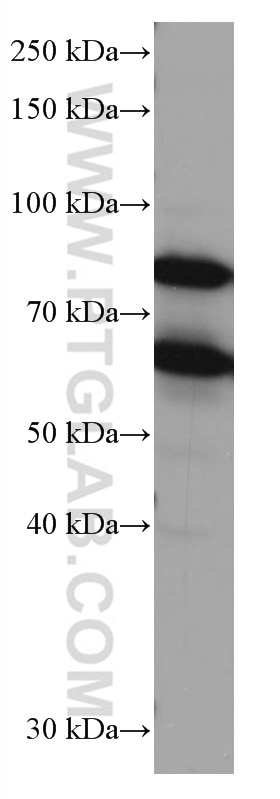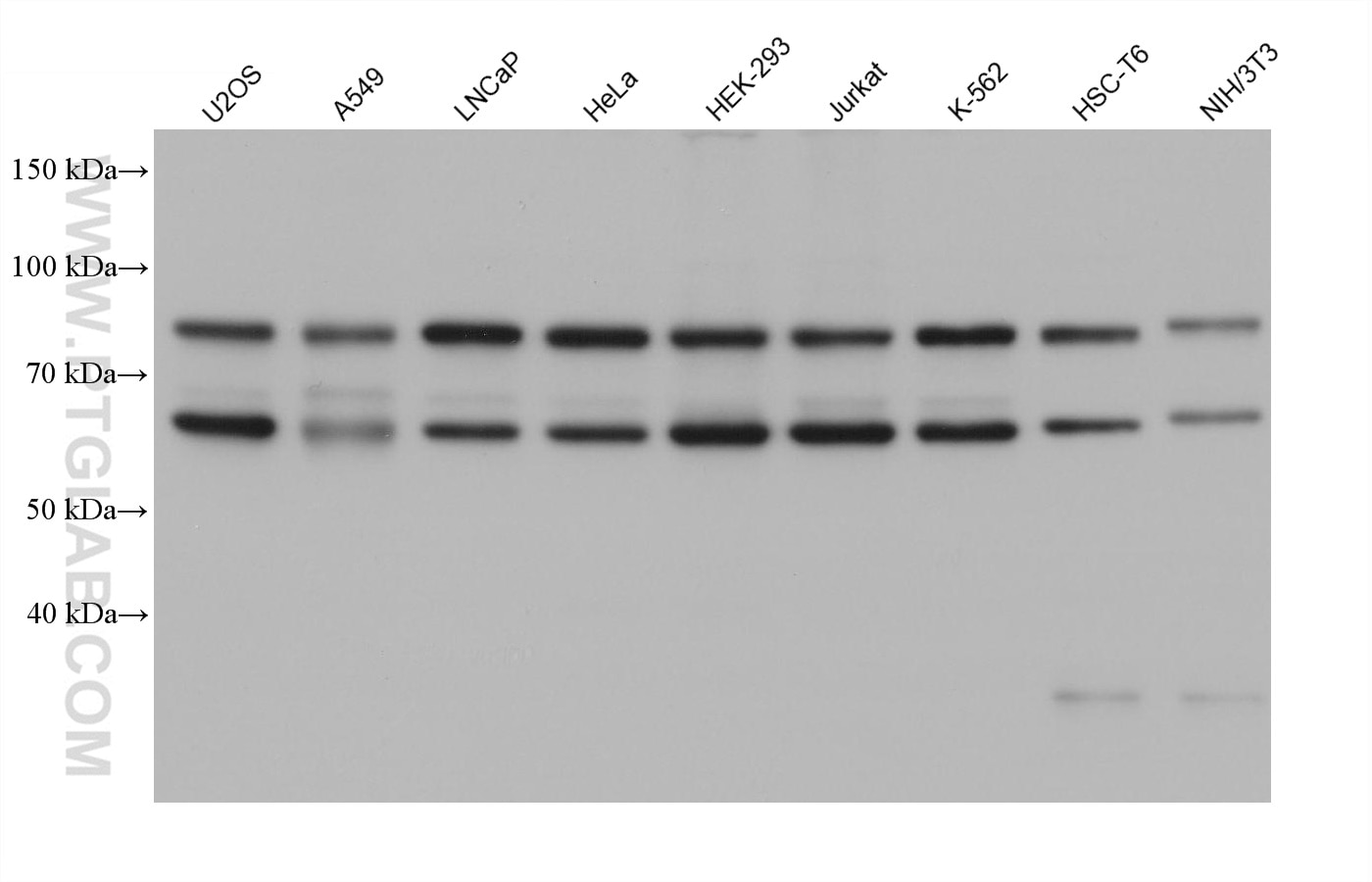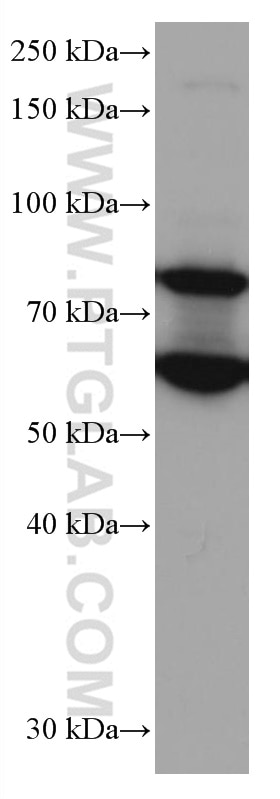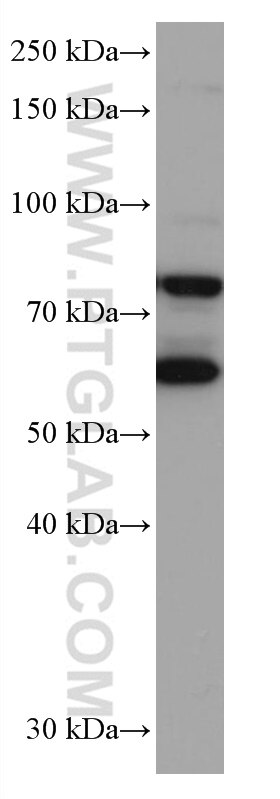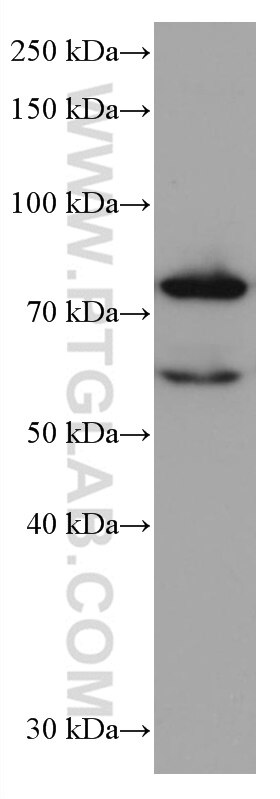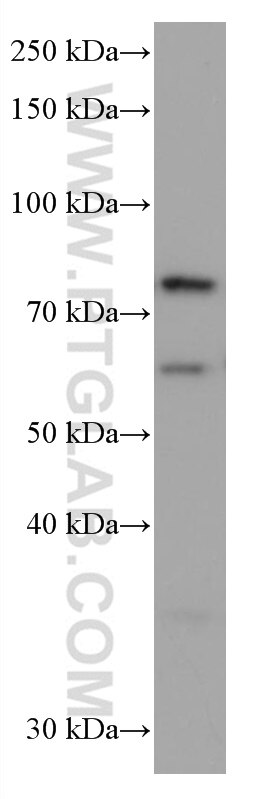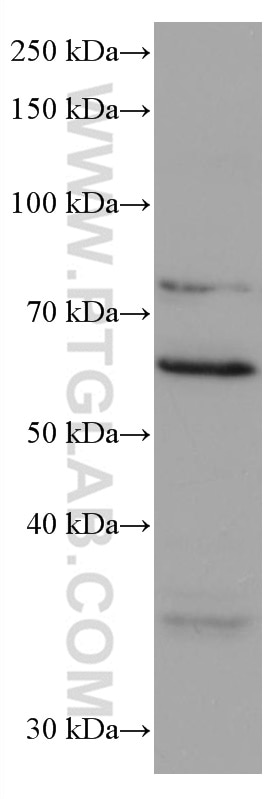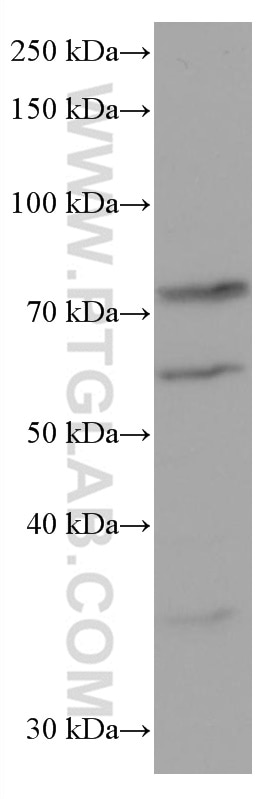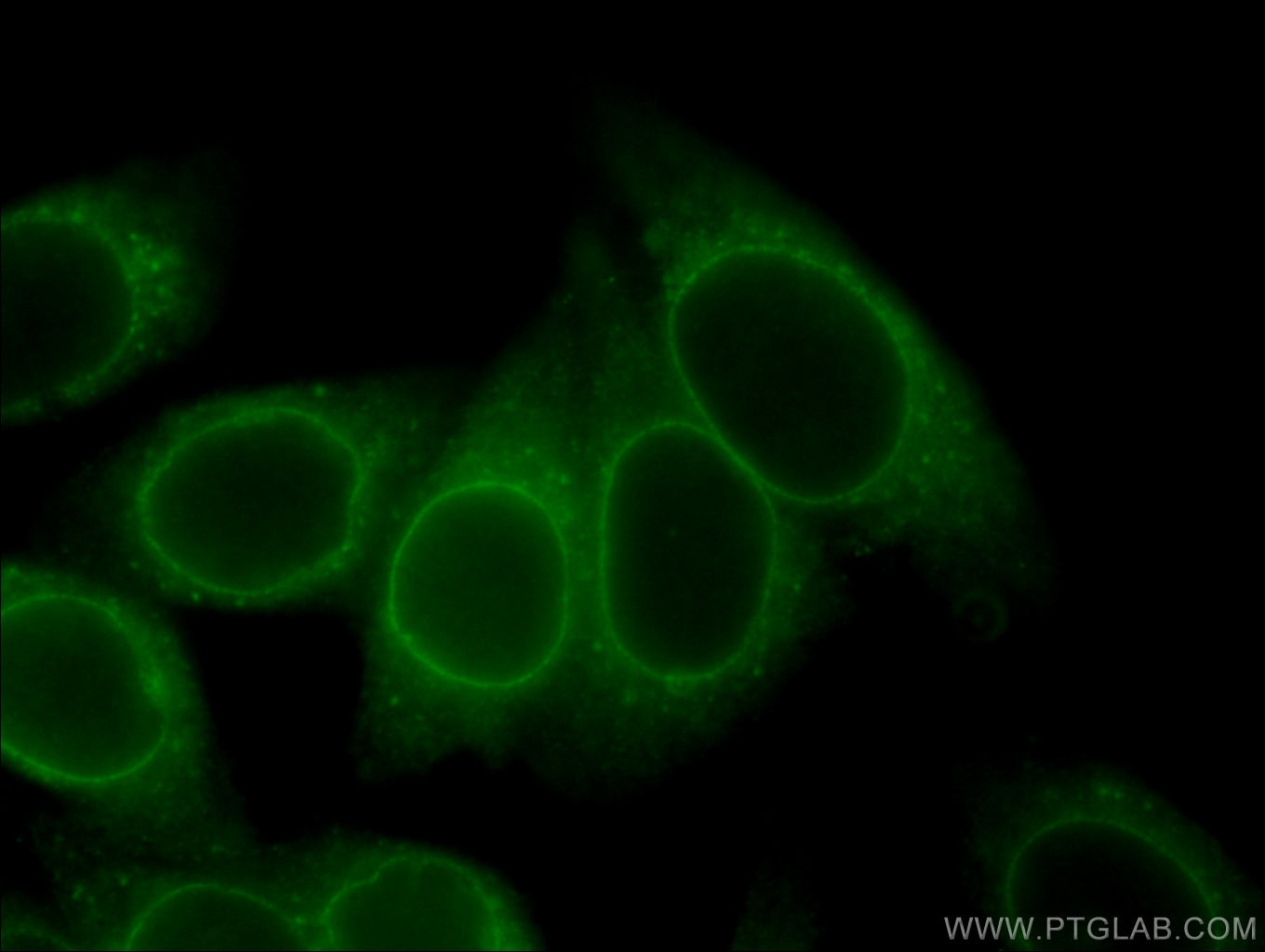Anticorps Monoclonal anti-RanGAP1
RanGAP1 Monoclonal Antibody for WB, IF/ICC, ELISA
Hôte / Isotype
Mouse / IgG1
Réactivité testée
Humain, rat, souris
Applications
WB, IF/ICC, ELISA
Conjugaison
Non conjugué
CloneNo.
1F3A4
N° de cat : 67146-1-PBS
Synonymes
Galerie de données de validation
Informations sur le produit
67146-1-PBS cible RanGAP1 dans les applications de WB, IF/ICC, ELISA et montre une réactivité avec des échantillons Humain, rat, souris
| Réactivité | Humain, rat, souris |
| Hôte / Isotype | Mouse / IgG1 |
| Clonalité | Monoclonal |
| Type | Anticorps |
| Immunogène | RanGAP1 Protéine recombinante Ag26136 |
| Nom complet | Ran GTPase activating protein 1 |
| Masse moléculaire calculée | 64 kDa |
| Poids moléculaire observé | 64 kDa, 82 kDa |
| Numéro d’acquisition GenBank | BC014044 |
| Symbole du gène | RANGAP1 |
| Identification du gène (NCBI) | 5905 |
| Conjugaison | Non conjugué |
| Forme | Liquide |
| Méthode de purification | Purification par protéine G |
| Tampon de stockage | PBS only |
| Conditions de stockage | Store at -80°C. 20ul contiennent 0,1% de BSA. |
Informations générales
RanGAP1 is a protein that associates with the nuclear pore complex and participates in the regulation of nuclear transport. In mammalian cells, unmodified RanGAP1 is predominantly cytoplasmic, whereas modification by small ubiquitin-related modifier protein (SUMO) targets RanGAP1 to the cytoplasmic filaments of nuclear pore complex (NPC) where it forms a complex with RanBP2 and Ubc9. Phosphorylation of RanGAP1 occurs in a cell-cycle-dependent manner and may play a role in regulating RanGAP1 catalytic activity. We got 64 kDa (cytoplasmic Ran GAP1) and 82 kDa (SUMO-1 modified Ran GAP1) in western blotting.
